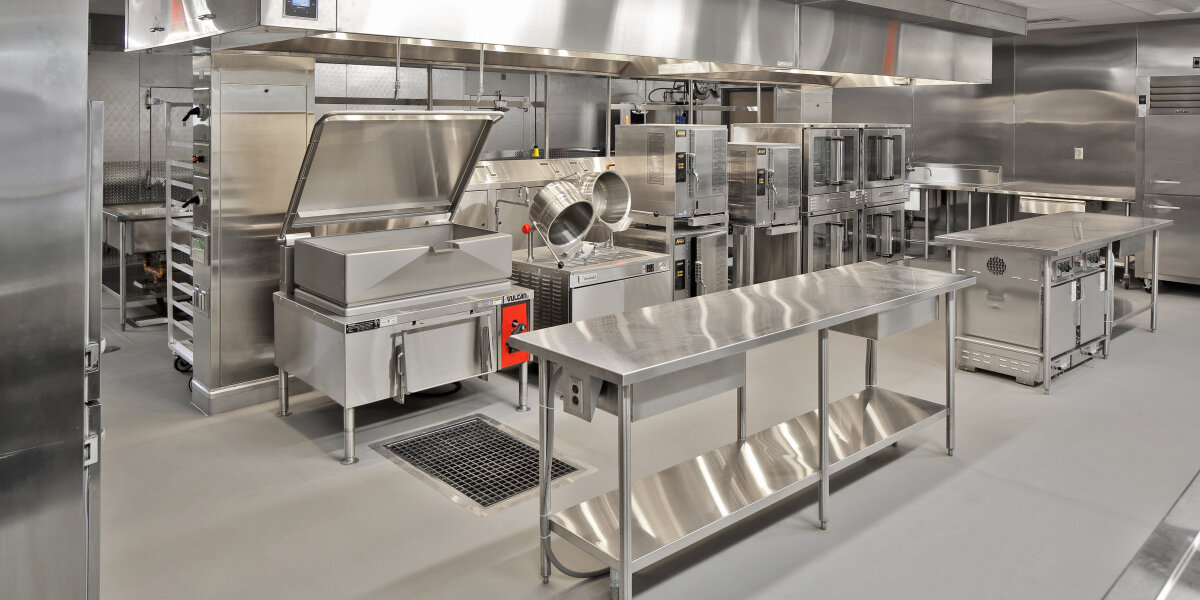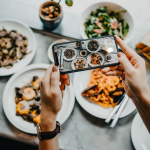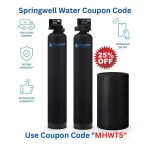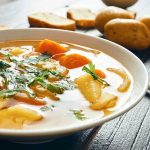
Automated Cooking: Revolutionizing Modern Kitchens
July 26, 2024
Automated cooking is transforming the way we prepare meals in modern kitchens. From smart appliances to cooking robots, technology is reshaping our culinary experiences. This revolution is making food preparation more efficient, precise, and accessible to people of all skill levels. It’s changing not just how we cook, but also how we think about and interact with food.
The journey into automated cooking spans several key areas. Smart appliances are connecting our kitchens to the digital world https://www.gastronomie-digitalisierung.de/, while robotic chefs are taking on complex cooking tasks. This shift raises questions about the balance between automation and human expertise in the kitchen. As we explore these developments, we’ll see how they’re shaping the future of home cooking and the food industry at large.

Content
The Rise of Kitchen Automation Technology
The culinary world is experiencing a significant transformation as kitchen automation technology gains momentum. This shift is reshaping how food is prepared, both in commercial settings and home kitchens. Recent years have seen an increased focus on innovation in the back of house, with changes that are having a profound impact on the customer experience.
Key drivers of automation adoption
Several factors are driving the adoption of kitchen automation technology:
- Labor shortages: The restaurant industry faces a significant staffing challenge. According to the National Restaurant Industry’s 2022 State of the Restaurant Industry report, seven out of ten operators lack adequate staff to meet customer demand.
- Efficiency and consistency: Automation helps streamline operations and maintain consistent quality in food preparation.
- Cost reduction: While initial implementation can be costly, automation can lead to long-term savings in labor and food costs.
- Hygiene standards: The pandemic has raised hygiene standards, and automation can help maintain these elevated requirements.
Types of kitchen automation systems
Kitchen automation encompasses a wide range of technologies:
- Smart appliances: These devices connect to the internet and offer features that enhance the cooking experience.
- Robotic assistants: Capable of performing tasks like flipping burgers or plating dishes, these robots combine precision with speed.
- Self-ordering kiosks: These empower customers to place orders directly, reducing waiting times and inaccuracies.
- Kitchen Display Systems (KDS): These systems replace traditional paper tickets, reducing order mix-ups and accelerating preparation.
- Integrated online ordering systems: These help restaurants better track and control ordering streams.
Benefits for restaurants and home cooks
Automation in the kitchen offers numerous advantages:
- Increased efficiency: Automated systems can handle multiple tasks simultaneously, optimizing the overall cooking process.
- Consistency: Robots and smart appliances ensure uniform measurements and cooking times, leading to consistent results.
- Safety: Automation minimizes the risk of accidents such as cuts or burns in the kitchen environment.
- Customization: Cooking robots can be programmed to follow specific dietary restrictions or preferences.
- Cost savings: Precise portion control and reduced food waste can significantly cut down on food costs.
As the kitchen automation market continues to grow, with projections indicating an expansion to $4.4 billion USD by 2028, it’s clear that this technology is set to play an increasingly important role in shaping the future of cooking, both in restaurants and home kitchens.
Smart Appliances and Connected Kitchens
The modern kitchen is undergoing a transformation, with smart appliances and connected systems creating an ecosystem that enhances the cooking experience. These innovations are making food preparation more efficient, personalized, and sustainable.
IoT-enabled kitchen devices
Internet of Things (IoT) technology is at the heart of this revolution, allowing kitchen appliances to communicate with each other and with users. Smart refrigerators, for instance, use AI algorithms to track inventory, monitor expiration dates, and even suggest recipes based on available ingredients. Samsung’s latest smart fridge, unveiled at CES24, features an internal camera that can identify individual food items, further enhancing its capabilities.
Other IoT-enabled devices include smart ovens that adapt cooking algorithms based on the dish being prepared, and cooktops with motion and temperature sensors that prevent overheating or spills. These appliances can often be controlled remotely via smartphone apps or voice commands, offering convenience and flexibility to users.
AI-powered cooking assistants
Artificial Intelligence is playing an increasingly important role in the kitchen. AI-powered voice assistants provide hands-free operation, offering step-by-step recipe guidance, ingredient measurements, and cooking timers. These assistants can also help with meal planning, create shopping lists, and offer culinary recommendations based on available ingredients.
For example, GE’s Flavorly app uses generative AI to create recipes from ingredients on hand, while Miele ovens employ internal cameras to suggest changes to cooking modes based on real-time images. These AI assistants learn and optimize over time, helping users explore new techniques and improve their culinary skills.
Energy efficiency and sustainability
Smart kitchen appliances are also contributing to energy efficiency and sustainability efforts. Many of these devices are designed to minimize energy consumption and reduce waste. For instance, smart refrigerators optimize temperature settings to save energy, while sensor-equipped taps use less water.
Appliance Type
Energy-Saving Features
Refrigerators
Temperature optimization, R600a refrigerant
Dishwashers
Advanced washing cycles, bulk-dispense technology
Cooktops
Induction technology for faster, more efficient cooking
Ovens
Convection fans for even heat distribution
Energy Star® certified appliances are particularly popular among energy-conscious homeowners, offering significant reductions in energy usage and potential eligibility for rebates or tax credits. These smart devices not only help reduce household energy bills but also contribute to the global effort to cut carbon emissions and conserve resources.
Robotic Chefs and Automated Food Preparation
Current capabilities of cooking robots
Robotic chefs are revolutionizing the culinary landscape with their ability to perform a wide range of cooking tasks. These sophisticated machines employ articulated arms and hands to replicate human actions in the kitchen. They can chop vegetables, stir ingredients, bake, grill, retrieve ingredients, and even prepare entire meals.
One notable example is the Moley Robotic Kitchen, which uses a combination of sensors and cameras to navigate the kitchen environment. Its fully articulated hands allow it to perform tasks such as picking ingredients from the fridge, adjusting hob temperatures, and plating meals. The robot follows recipes from an “iTunes style library,” taking care of the entire process from preparation to cooking and cleaning.
Advantages and limitations
Cooking robots offer several advantages:
- Consistency: They ensure uniform measurements and cooking times, leading to consistent results.
- Speed: Automated processes increase production speed, surpassing human capabilities.
- Safety: Robots minimize the risk of kitchen-related accidents and improve hygiene by reducing direct human contact with food.
- Customization: They can be programmed to follow specific dietary restrictions or preferences.
However, there are also limitations:
- Cost: The initial investment for cooking robots can be substantial, with some commercial models starting at over $250,000.
- Maintenance: Regular upkeep and software updates are necessary, potentially leading to downtime.
- Lack of creativity: Robots struggle to replicate the intuitive and experimental aspects of cooking that humans excel at.
Future developments in robotic cooking
The cooking robot market is experiencing rapid growth, with projections indicating an expansion to $4.4 billion USD by 2028. Future developments are likely to focus on enhancing the robots’ adaptability and sensory capabilities. Integrating artificial intelligence and machine learning will enable these robots to learn new recipes, adjust cooking processes based on real-time data, and even develop their own culinary creations.
As the technology advances, we can expect to see more affordable and compact versions of cooking robots designed for home use. These may come in the form of small, boxlike units capable of preparing basic meals, with an estimated retail price of around $500. The integration with smart home systems and voice recognition technology will further enhance the convenience factor, allowing users to control cooking robots through voice commands or smartphone applications.
The Human Element: Balancing Automation and Culinary Expertise
Roles for human chefs in automated kitchens
While automated cooking is revolutionizing modern kitchens, human chefs continue to play crucial roles. They oversee and manage robotic operations, ensuring a seamless dining experience. Human employees handle essential tasks such as marinating proteins, chopping vegetables, and crafting dressings. They also add finishing touches to dishes, like salting fries and assembling burgers, maintaining high standards of quality.
The integration of automation in kitchens has led to a shift in the skill set required from culinary professionals. This new landscape demands a different type of cook, chef, and food service manager – one who is software-informed and data-aware. These professionals need to adapt to the changing environment, combining traditional culinary expertise with technological proficiency.
Enhancing creativity through technology
Contrary to fears of AI replacing human creativity, it is emerging as a powerful tool for unleashing culinary innovation. AI-powered platforms analyze vast amounts of data, including recipes, social media posts, and restaurant reviews, to uncover emerging trends and flavor preferences. This wealth of information inspires chefs to experiment with new ingredients, techniques, and flavor combinations.
Einav Gefen, SVP Chef Innovator at Restaurant Associates, views this shift positively: “If we shift the paradigm and the mindset and say, ‘Okay, it will free me to explore more, to see what other chefs are doing, to try different things…,’ I actually see it as an advantage, not a fear factor.”
Training and adapting to new systems
As the culinary world evolves, it’s crucial to integrate AI into culinary education. This approach will equip the next generation of chefs with the tools and skills needed to thrive in this changing landscape. Culinary schools and programs that embrace AI will produce graduates proficient in traditional techniques and adept at leveraging technology to enhance their creativity and productivity.
To adapt to this new environment, chefs can use current “downtime” to upskill in areas such as data analysis, food manufacturing, and HACCP Certification. The future of gastronomy promises to be a combination of human imagination and technological innovation, requiring chefs to balance traditional culinary expertise with the capabilities of automated systems.
Conclusion
The revolution in automated cooking is causing a profound transformation in modern kitchens https://www.gastronomie-digitalisierung.de/news/. From smart appliances to robotic chefs, these technological advancements are changing how we prepare meals, making the process more efficient and accessible. This shift is not just about gadgets; it’s reshaping our relationship with food and cooking, blending traditional culinary arts with cutting-edge technology.
As we look ahead, the future of cooking seems to be a mix of human creativity and machine precision. While robots and AI can handle many tasks, the human touch remains crucial to add that special flair to dishes. This balance between automation and expertise opens up new possibilities to explore culinary innovations and improve our cooking skills. In the end, these advancements in kitchen technology are set to make cooking more enjoyable and less time-consuming for everyone.
FAQs
What does kitchen automation entail?
Kitchen automation refers to the use of robots or automated systems specifically designed to cook food with high precision, ensuring top quality and cleanliness. This concept has gained popularity in India, where the widespread use of mobile internet has significantly influenced contemporary dining habits.
What is the cost of a cooking robot?
The retail price for Nymble’s cooking robot is $1500. The initial batch has already been sold out, and the next round of orders is expected to reopen after June 2024. It’s important to note that this price does not cover the subscription needed for additional recipes.
Why is automated cooking considered the future of kitchens?
Automated cooking machines offer numerous advantages, including significant time savings as they allow you to prepare meals without constant supervision. Additionally, these devices require less space than multiple traditional appliances, thanks to their precise control and multifunctionality.
Which company created the first robotic kitchen?
Moley Robotics, based in London, United Kingdom, has developed what is recognized as the world’s first robotic kitchen. This innovative creation features a multifunctional cooking platform.

Cathy Webb is a health blog author who has been writing about healthy living since 2024. She started her journey by adopting a vegan diet and eating only organic foods, but the more she learned, the more she realized that we should all be eating plant-based diets exclusively. As an expert in nutrition and wellness, Cathy blogs to educate readers on how they can live happier and healthier lives through food choices!











